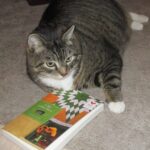One thing I almost always counsel my students to do while they finish their novels is to begin writing short personal essays for publication. Why? It’s all about your author cred.
Writing Tip for Today: What are some tips for creating short personal essays for publication?
The One-inch Frame
Start with your life—but keep the topic to the one-inch frame. Anne Lamott, in Bird by Bird, asks writers to focus their writing tightly by keeping an essay only about one thing, one event, one experience. We’ve all done many things and had many experiences. Instead of writing a story about this overarching life you’ve had, zoom in on one day, one particular experience or event. E. B. White said, “Don’t write about man. Write about a man.”
When you train your one-inch frame onto a particular event, many of my students gravitate toward their most dramatic or harrowing experience: the car crash, the flood or the hurricane. While these are fine things to write about, many new writers become overwhelmed by the drama and lose the humanity of that event. In other words, with all the sirens and tumult, your emotional state (and how it changes) tends to be lost or buried.
Writing, in my view, should always be about our shared human emotions and how life changes and shapes them. Instead of looking for your most dramatic moment, find an event in which many readers will see themselves. Choose to write about the times when you changed, grew or had to reckon with your own conflict or biases. We’ve all lost or gained love, acceptance and the need to belong. Find your stories that center on these changes.

Writing, in my view, should always be about our shared human emotions and how life changes and shapes them.
The Story
Your personal essay should be written like fiction: with scenes including action, sensory details and dialogue. By focusing your one-inch window on a specific incident, you’ll be better able to recreate the characters, setting and dialogue in a particular way.
To ensure that you are writing in scenes, check to see if you are using words such as “always” or “never.’ These words denote a continual state instead of a particular scene. Instead of writing, “Grandma always baked pies on Thanksgiving,” put your readers in the scene by writing, “That morning, Grandma baked Thanksgiving pies.”
Your story should also have a beginning, middle and end. This structure is the same as for a novel, but briefer. If you need to write your story to fit publication guidelines (more on that next time), keep in mind the Three Act Structure.
The Takeaway
The takeaway is what readers relate to and can use in their own lives. It should come at or near the story’s end and should give readers a nugget that satisfies much like a novel’s resolution. The takeaway answers questions such as, How did I change or grow? What did I learn?
When it comes to “takeaway” of the story, essay writing tempts us to pontificate or preach. Resist this urge. One way to do this is to keep the takeaway brief. In an 800 word essay, the takeaway might be a sentence or two or a short paragraph. Remember, you’re telling a one-inch slice of your life, so keep this part of the story as short as you can.
This takeaway is also called the Turn. Just before the end of your story, you “turn” to the readers and write your change, growth or lesson in a more universal way. But don’t stay too long. Many effective personal essays end back in a particular scene or in the same scene as the beginning, called a “wrap-around.”






Linda, you always have such helpful information — thank you!
I will share it with others, too.
Hi Margery,
Thanks–I’m happy to help.
Keep Writing!
Linda